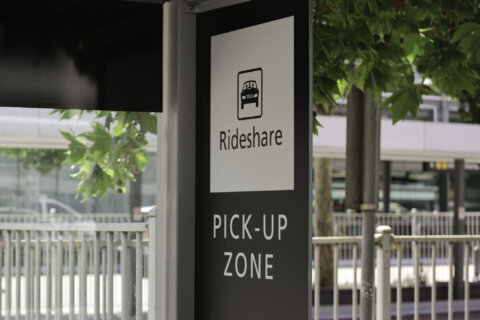Nearly half of American adults will take a vacation this summer, according to a new report from CreditCards.com.
The unfortunate reality for many Americans, however, is that summer vacation equals debt. Whether you’re jetting off to Paris or loading the family in the Suburban and driving a few hours to the beach, vacations are expensive, and it’s not uncommon for people to return home from their trips to a giant pile of bills.
The good news is that there are ways to avoid the debt spiral, and many Americans say they’re doing just that. In the CreditCards.com survey, two-thirds of those vacationing this summer say they expect to pay their vacation off in a month or less. Just 11 percent of vacationers say it will take them four or more months to pay for their trip.
[See: 6 Ways to Treat Yourself on a Budget.]
So how are these folks doing it? Check out the following list of tips.
Paying With Savings
About eight in 10 Americans who are planning to take a 2016 summer vacation say they’d pay for at least part of their vacation with savings, according to the CreditCards.com report. That’s great news because there’s no better way to pay for a vacation than to do so with money that’s already in hand — and every little bit helps.
Saving isn’t easy, though, especially if you’re living paycheck to paycheck or on a tight budget. The best way to ensure that you’re saving is to automate the process. Do your homework and figure out how much you’d like to save for your trip. Then, look at how much time you have left before your trip and do the math on exactly how much money you’d need to save each week or each month or from each paycheck to reach your goal. Finally, set up an automatic payment that moves that specific amount from your checking account into a savings account or a PayPal account or wherever else you plan to stash your vacation savings. That way, the choice of whether to actually move the money is taken out of your hands.
Paying With a Credit Card
OK, this one might sound counterintuitive, but hear me out. Credit cards can work for you rather than against you, if you use them properly.
Take the Chase Freedom Unlimited card. This card offers a $150 cash back bonus after you spend $500 on purchases in your first three months with the card. That means that you can get the card before you go on your vacation, make $500 worth of purchases on the trip — which between gas, food and hotels shouldn’t be a problem — and you’ll get $150 back. Then, once you’ve spent that $500, you never have to use the card again if you don’t want to.
That’s a significant savings. That’s a night at a hotel. That’s a few days of a car rental. That’s a whole lot of food. In short, it makes a difference.
Fifteen percent of vacationers say they’d use their credit cards to pay for at least a part of their trip. While that can lead to problems, it doesn’t have to. Just be absolutely certain that you pay your balance off at the end of every month and that you don’t overspend just to collect rewards. That’s a sure way to get yourself in trouble.
[See: 12 Ways to Be a More Mindful Spender.]
Paying With Rewards Points or Miles
There’s never been a better time to rack up rewards points or miles through credit card sign-up bonuses. Big deals are everywhere, and if you have good credit, you can probably find a bonus offer that can save you a substantial amount of money on your next trip. Here are a few:
— Chase Sapphire Preferred card: Earn 50,000 bonus points when you spend $4,000 in the first three months. You can then transfer those points to airlines such as Southwest and United for free airfare or hotel chains including Marriott and Hyatt for free nights. You can also redeem them through Chase’s Ultimate Rewards portal for an extra 20 percent off. That means that a $625 flight would cost you just 50,000 points instead of the typical 62,500.
— Capital One Venture Rewards card: Get a bonus of 40,000 miles when you spend $3,000 in the first three months. That sign-up bonus would equate to $400. You can also redeem those miles for statement credit to pay off travel purchases.
— Platinum Delta SkyMiles American Express card: This card gives you 60,000 Delta SkyMiles and 10,000 Medallion Qualification Miles after you make $2,000 in purchases in the first three months. That’s one of the biggest offers in the industry, though it’s important to know that the card comes with a $195 annual fee. Many rewards cards will waive the annual fee for the first year, but this card does not, so that’s important to factor in to your decision.
Thirteen percent of summer vacationers say they plan to pay for at least part of their vacation with rewards points or miles. That’s nearly as many as are planning to use plastic to pay for their trips, and that’s another good sign that people are finding more and more ways to cut vacation costs.
[See: 12 Shopping Tricks to Keep You Under Budget.]
The Bottom Line
It’s great to see that so many Americans are planning debt-free vacations. The truth, however, is that many more Americans could do the same with a bit of forethought and planning. Still, as with anything with credit cards, the key to the whole thing is making sure that you pay your balance off in full and on time every single month. If you do that, you can put credit cards to work for you and save a great deal on an awesome family vacation. If you don’t, the math starts to work against you in a big hurry.
More from U.S. News
What to Do If You’ve Fallen (Way) Behind on Your Credit Card Payments
10 Money-Saving Websites to Check Before Shopping
10 Oddly Practical Things You Can Rent
3 Ways to Avoid Going Into Debt on Your Summer Vacation originally appeared on usnews.com







